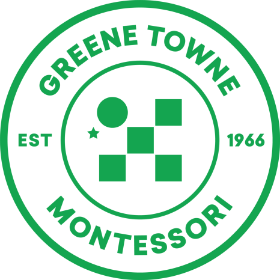Monarch Community: What Is All The Fuss About Core Strength? (February 2024)
“When mental development is under discussion, there are many who say, ‘How does movement come into it? We are talking about the mind.’ And when we think of intellectual activity, we always imagine people sitting still, motionless. But mental development must be connected with movement and be dependent on it. It is vital that educational theory and […]

“When mental development is under discussion, there are many who say, ‘How does movement come into it? We are talking about the mind.’ And when we think of intellectual activity, we always imagine people sitting still, motionless. But mental development must be connected with movement and be dependent on it. It is vital that educational theory and practice should be informed by that idea.”
Dr. Maria Montessori, The Absorbent Mind
Enhanced Learning Through Movement
The Child’s Undoubted Need To Move
Toddlers are doers and have an innate desire to move. To move! A new power they now have. Before this, they were dependent upon adults for everything. Now, they can stand, walk, lift heavier objects, and reach higher objects; with more movement and practice, they become stronger, faster, and more balanced. As adults, we have mastered moving (for the most part), but Toddlers are living in their development as it happens. Their new ability to move and become stronger, paired with their intense desire to explore, may lead to some… “oops” moments. They will run and fall. They will climb and knock something over. They will discover throwing and maybe break a glass. Our little explorers and scientists can be clumsy and oftentimes disorderly.
“The child, if left without guidance, is disorderly in his movement, and these disorderly movements are the special characteristics of the little child. In fact, he ‘never keeps still,’ and ‘touches everything…’ As a matter of fact, in these movements, the little one is seeking the very exercise which will organize and coordinate the movements useful to man. We must, therefore, desist from the useless attempt to reduce the child to a state of immobility. We should rather give ‘order’ to his movement, leading them to those actions towards which his efforts are actually tending.”
Dr. Maria Montessori, Dr. Montessori’s Own Handbook
How precious that Dr. Montessori refers to disorderly movements as the “special characteristics of the little child” and emphasizes that these movements are exactly what the child needs to grow stronger and more controlled. Through observing the environment and each child individually, teachers can identify various aspects of movement, whether it is the classroom as a whole (i.e. children running within the room) or something specific to a child or group of children (i.e. repeated throwing of objects). Dr. Montessori tells us that through observation, the secrets of childhood will unfold and then “follow the child.”
So, if the children are running within the classroom, perhaps an impromptu movement Circle is needed, whether it is yoga, cardio, or stretching. The big question is how can we positively redirect this energy. It is time to get that energy out! Annnnd perhaps a few Grace and Courtesy lessons are necessary, but those can be saved for a time when the children are focused and calm.
If a child throws Lego blocks, how can I feed the need for throwing without making the child feel bad? As Dr. Montessori says, “give ‘order’ to his movement, leading them to those actions towards which his efforts are actually tending.” The child has a need to throw, so I might create a throwing work; and remind them of course, “The Lego blocks are for building and if you want to throw then you may use the throwing work.” This type of work is typically a basket of bean bags, and the child tries to throw the bags into the basket. The child may have a need to throw every day, or this need might last for a week before a new focus develops.
“The task of the educator lies in seeing that the child does not confound good with immobility, and evil with activity, as often happens with old-time discipline…”
Maria Montessori, The Montessori Method
Movement In the Curriculum
Through intentional observation, Dr. Montessori discovered that movement catalyzes children’s learning. As she highlights the importance of movement in learning, she emphasizes that the two are not separate.
“Movement is therefore an essential part of life, and education cannot be conceived as moderating, or what is worse, inhibiting it. Rather it should permit a child’s energies to develop normally and assist him to exert them more profitably.”
Dr. Maria Montessori, The Discovery of the Child
There is the freedom to move within the environment, but more importantly, movement is embedded in the curriculum. Each material requires muscular movement that sends signals to the brain, which builds neurotransmitter connections, leading to a more orderly, disciplined, and regulated child. The children are constantly in motion during their day, whether it is carrying a tray to a table, pushing in a chair, rolling a rug, walking to get a towel, painting at the easel, mixing ingredients, transferring objects via tongs, building with the magnetic tiles, walking to get water, switching their shoes, cutting an apple, sweeping up crumbs, scrubbing the table, etc. Fine movements are just as crucial. The children are feeling how a sound is shaped, manipulating a variety of utensils, twisting off lids, unzipping their jacket and lunch bag, pouring with glass pitchers, building contraptions that require precise movements, hammering nails, cutting with scissors, practicing how to spin a dreidel, etc. They are always moving and therefore always refining and strengthening their skills. As their skills strengthen, so does their independence.
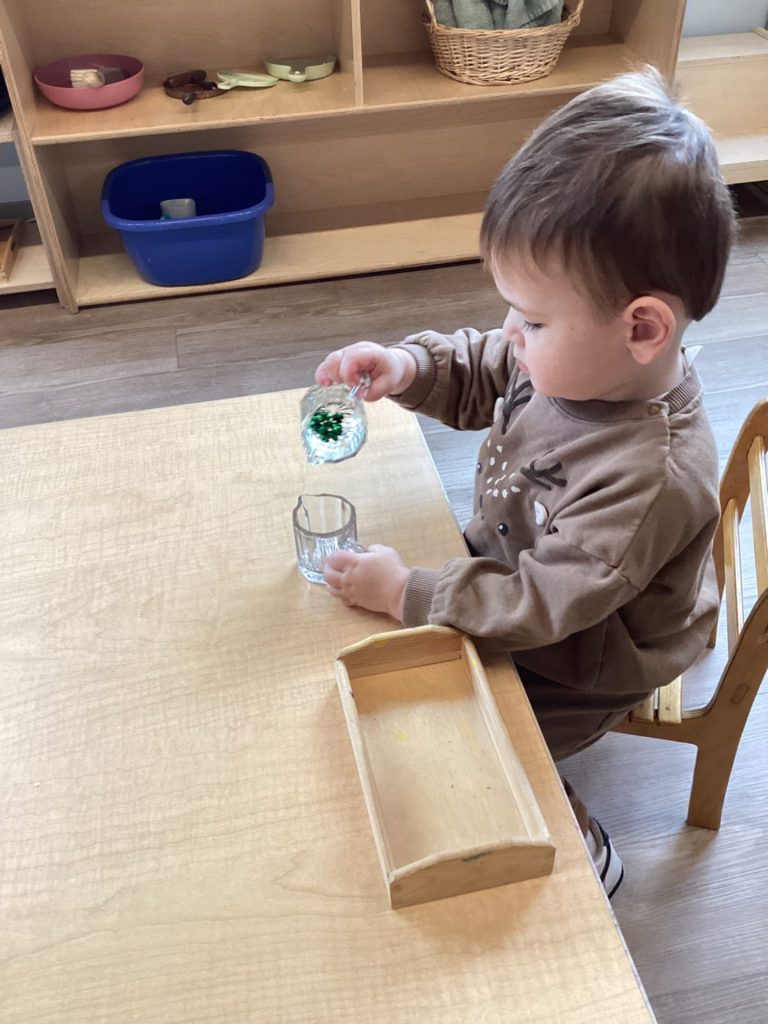

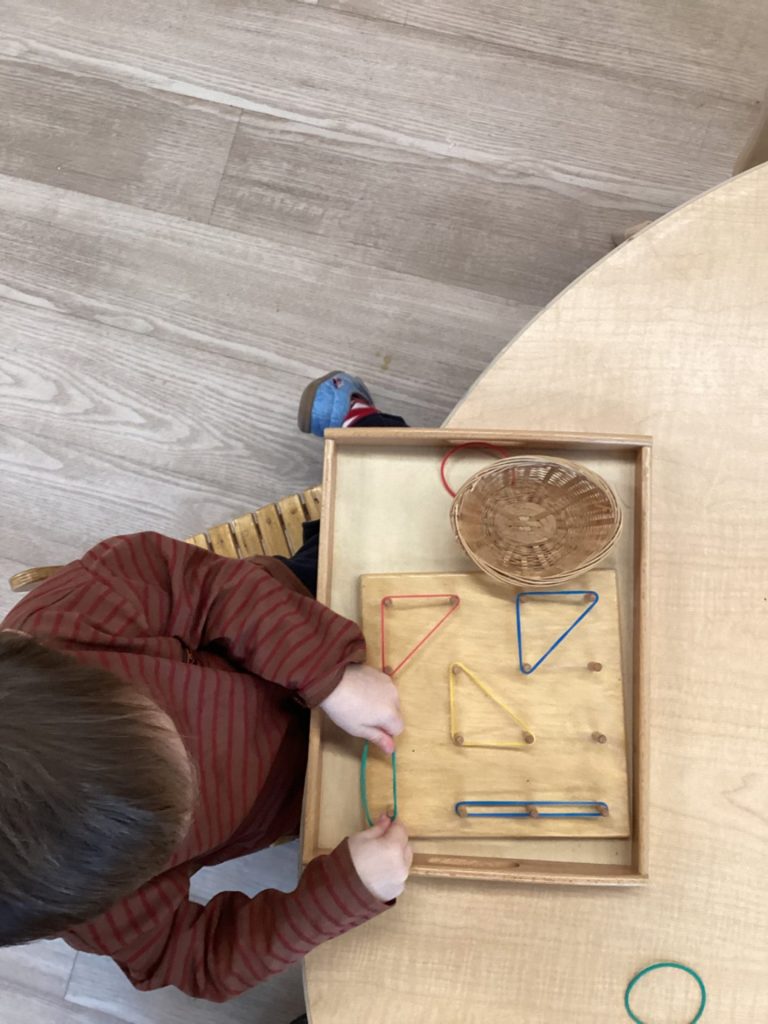
What is Core Strength?
Core strength is postural stability, which is the ability to hold oneself up. When a child can hold themselves up while sitting at circle or in a chair, they can pay attention to the task at hand. They can follow along to stories, mimic song movements, focus on their work, etc. When a child cannot hold themselves up, it becomes difficult for them to accomplish tasks. Their priority shifts from their work to holding themselves up or keeping themselves from falling. More of their thought and energy go into stabilizing themselves, and they begin to miss out on what the environment has to offer. When this happens, movement in the curriculum becomes even more intentional, with the goal of strengthening the muscles.
What Does A Weak Core Look Like?
When a child has a weak core, it can affect their ability to sustain attention or focus on a task and may limit their fine motor capabilities. Sometimes, a child with a weak core may appear easily distracted, energetic on the go, lethargic, or clumsy. Children with a weak core may have difficulty maneuvering utensils, cutting with scissors, and zippering their jackets; and later it may affect handwriting. At school, we notice this at Circle time when a child has difficulty sitting up tall. They may lean or lay on other children, sit in a W position, or rapidly switch sitting positions. A child may slouch while sitting in a chair or lean on the table while working. They may appear extra tired at times and lie on the pillow and other times appear extra bouncy, and unable to choose or focus on a work.
Years ago, I had a toddler with a predilection for letterwork. They were enamored with the sounds and sandpaper letters, and before leaving my environment, began piecing together 3 lettered words. In the Primary environment, this child struggled with letter work and focus. After some discussions and observations, the adults noticed this child was exhibiting signs of a weak core and, with the help of an occupational therapist, guided the child in stabilizing their body while sitting in a chair by wrapping their feet around the legs of the chair. After this minute change, the child was able to focus and continued their love for letter work with ease.
Some common signs of a weak core are:
- Poor posture: slouching or leaning while sitting
- Difficulty sitting still
- Leaning on tables
- Falling over while walking
- Sitting with legs in a W position
More information on Core Strength
More information on the effects of W sitting on the body
Activities to Help Strengthen the Core Muscles
All people, especially toddlers, will show signs of a weak core at some point. It is when they are showing consistent signs that we should partner together to be more intentional with the work in the classroom and play time at home. In the classroom, I will present work like a Lego wall or magnetic stand that promote pushing and pulling while standing. This is the same for a child-sized carpet sweeper, swiffer, and broom. The chalkboard walls in the movement room and on the Playdeck allow children to move their bodies vertically and horizontally, and cleaning chalk off of the walls promotes muscle strengthening as well. This is the same for window washing and table scrubbing.
Some activities to help strengthen core muscles:
- Throwing items with two hands overhead in a downward motion, like laundry into a laundry basket or a pillow onto the floor
- Pushing and pulling motions like standing and working at a Lego wall or using a vacuum/carpet sweeper
- Painting with water while standing. All you need is a bucket of water, a paintbrush, and a wall outside
- Throwing wet sponges
- Playing catch with a pillow
- Playing catch with a beach ball
- Helping to load dirty clothes into the washer and wet clothes into the dryer
- Wiping and drying a table, wall, or window
- Kicking a ball
- Animal walks
- Taking long walks and using the stairs. I highly recommend walking to the Art Museum and walking up the stairs. The Free Library of Philadelphia is also a nice place to take a walk up and down stairs, and then you can finish your walk by reading stories.
Goodbye, February
The playdeck is open!!! We are so unbelievably excited to be able to go outside to play. The children enjoy hanging from the climbing dome, walking up the stairs of the climbing structure, sliding down the slide, serving pizzas and ice cream through the playhouse windows, dancing along to music, and watching the trains go by.



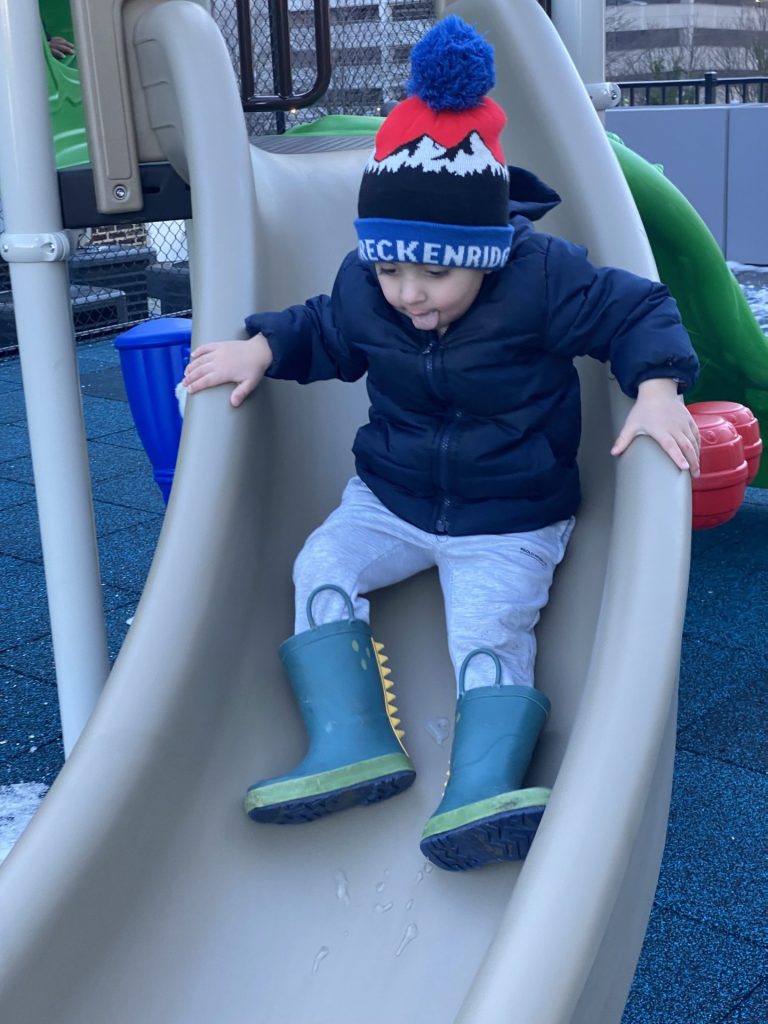
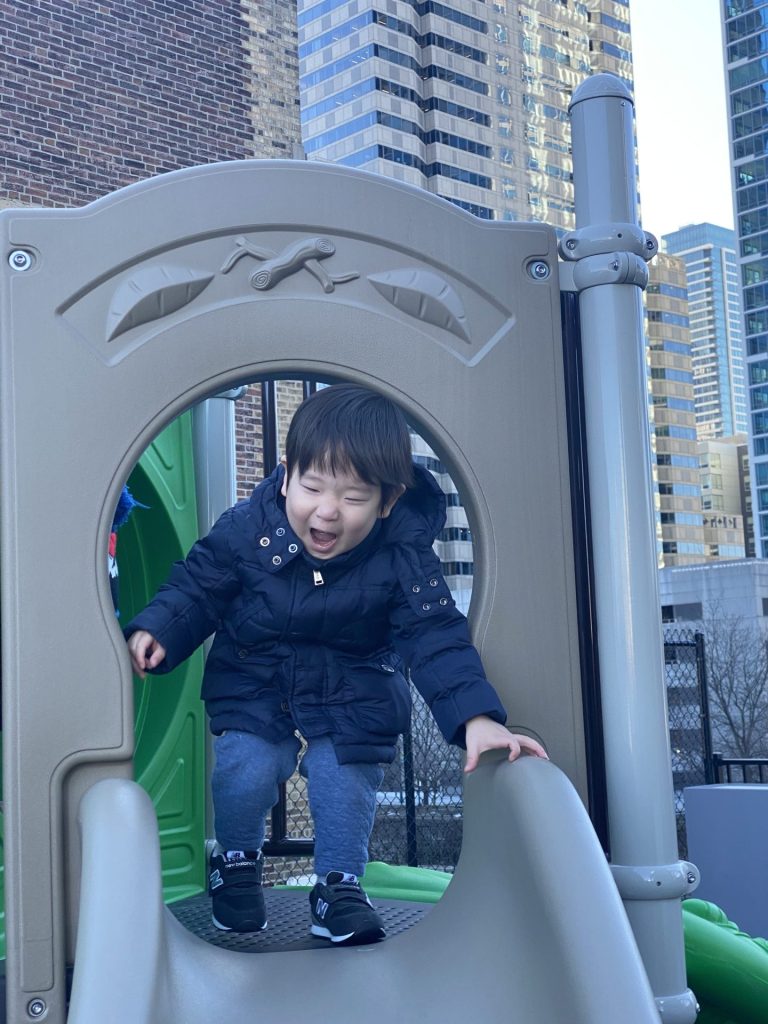

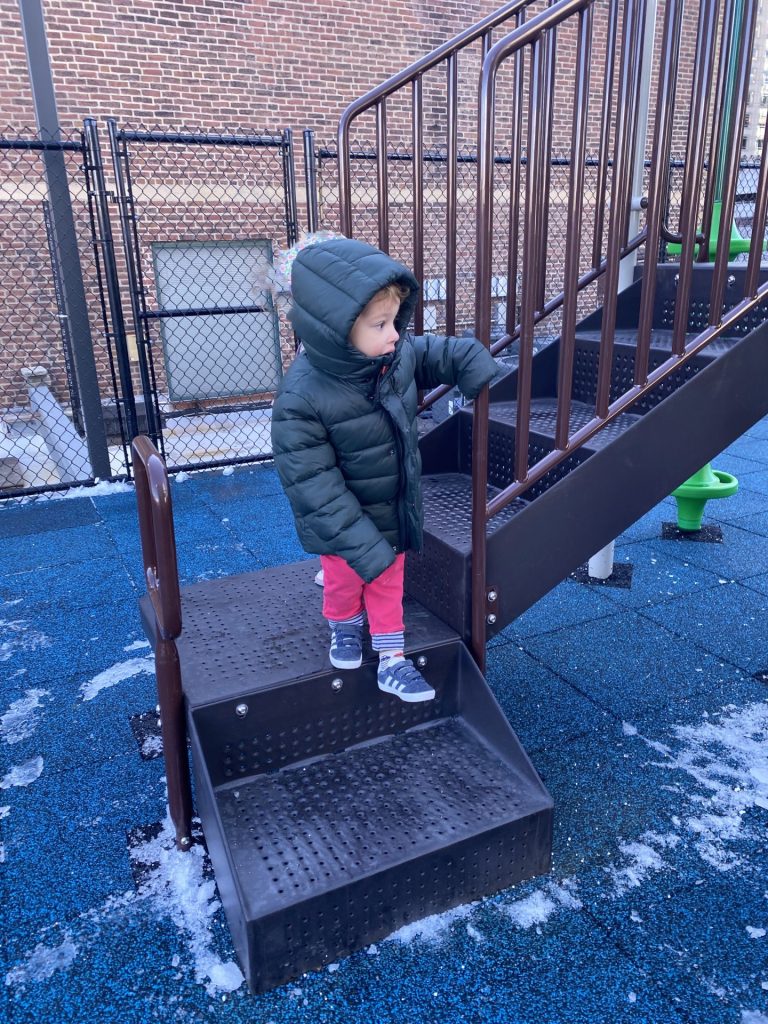

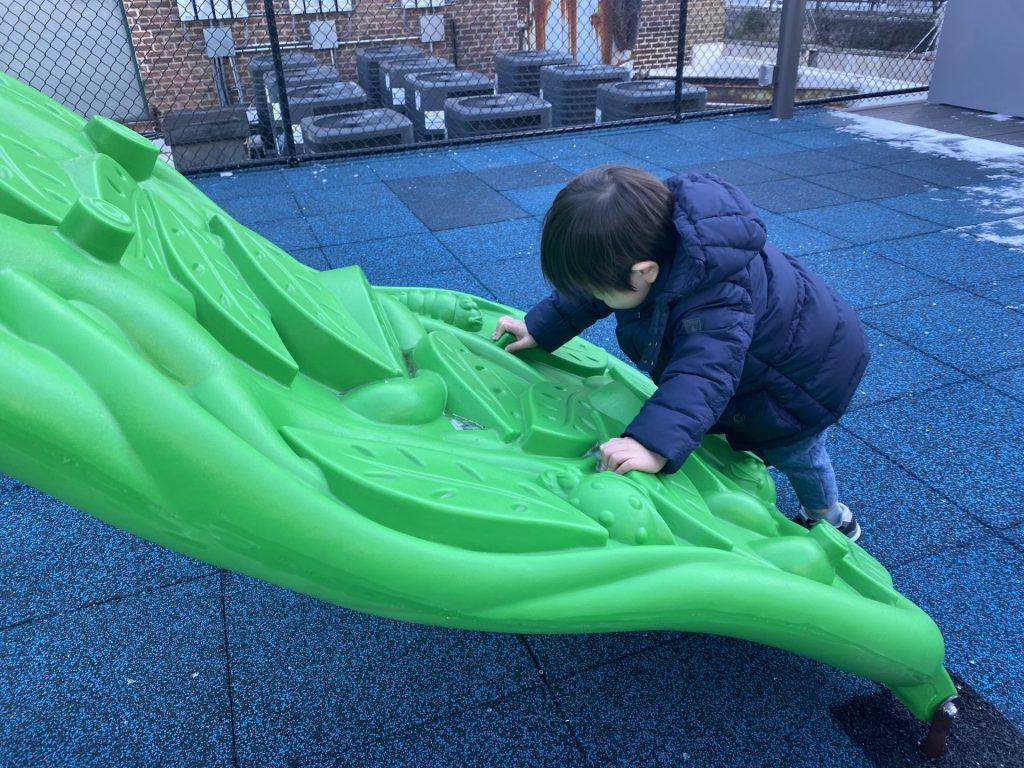
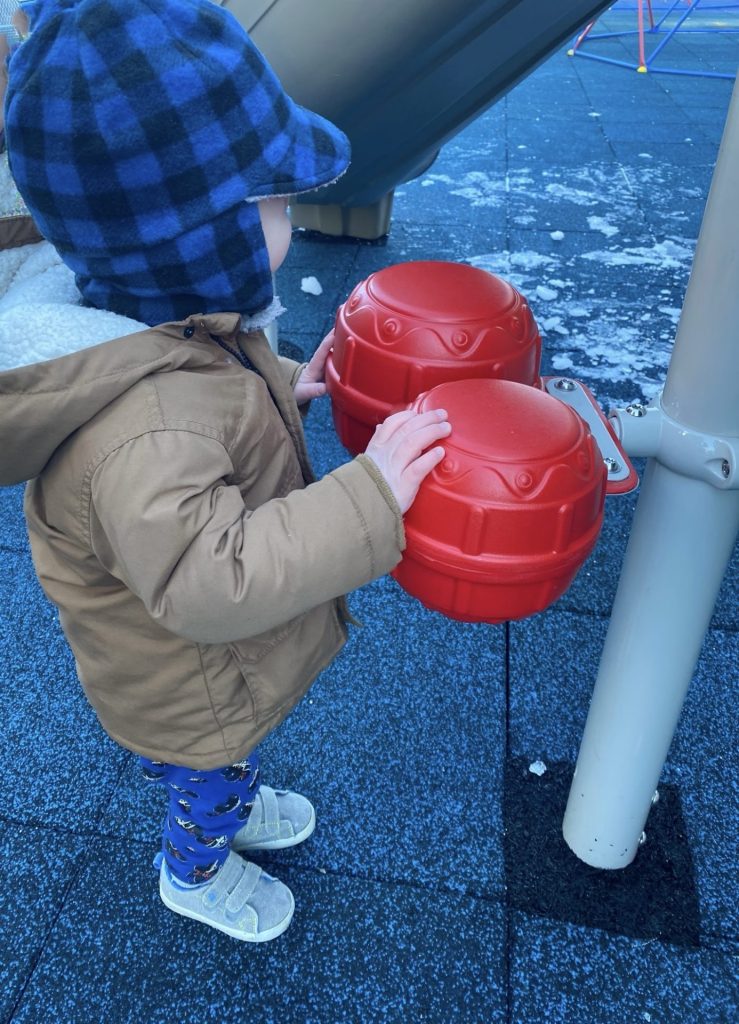
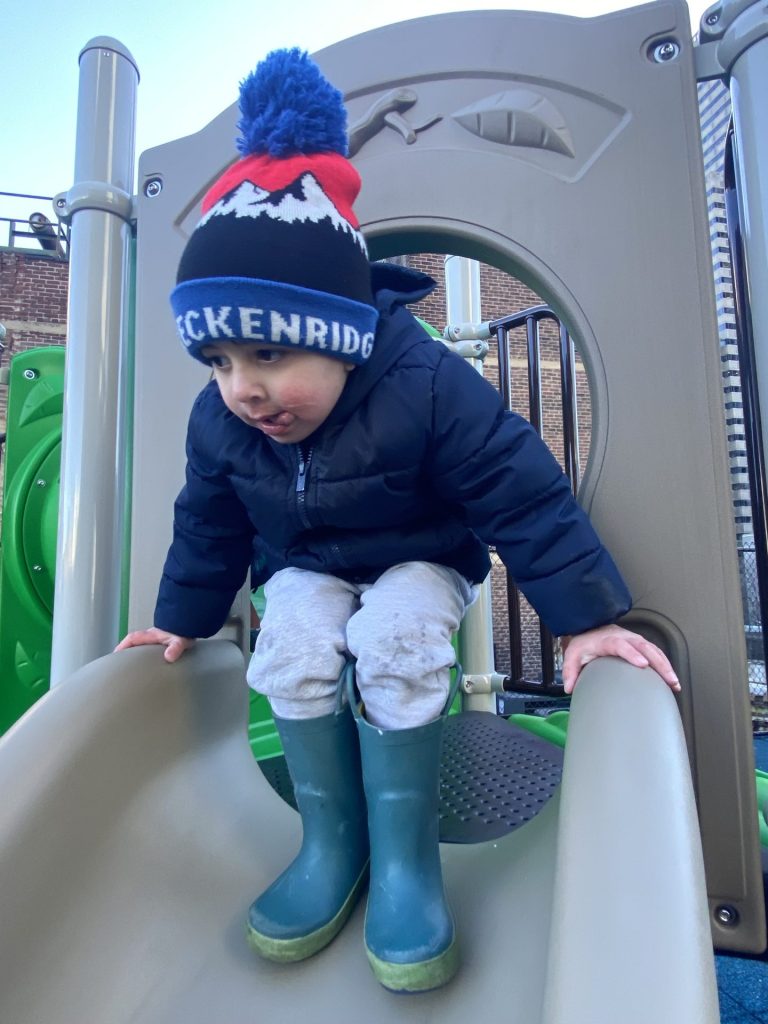

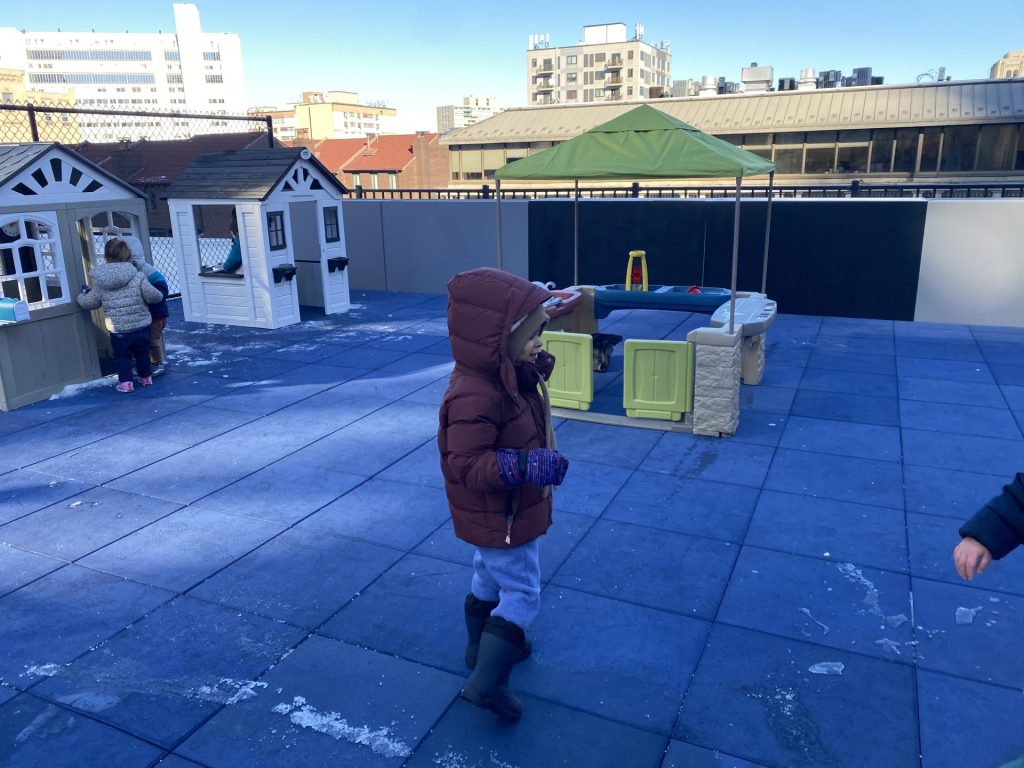

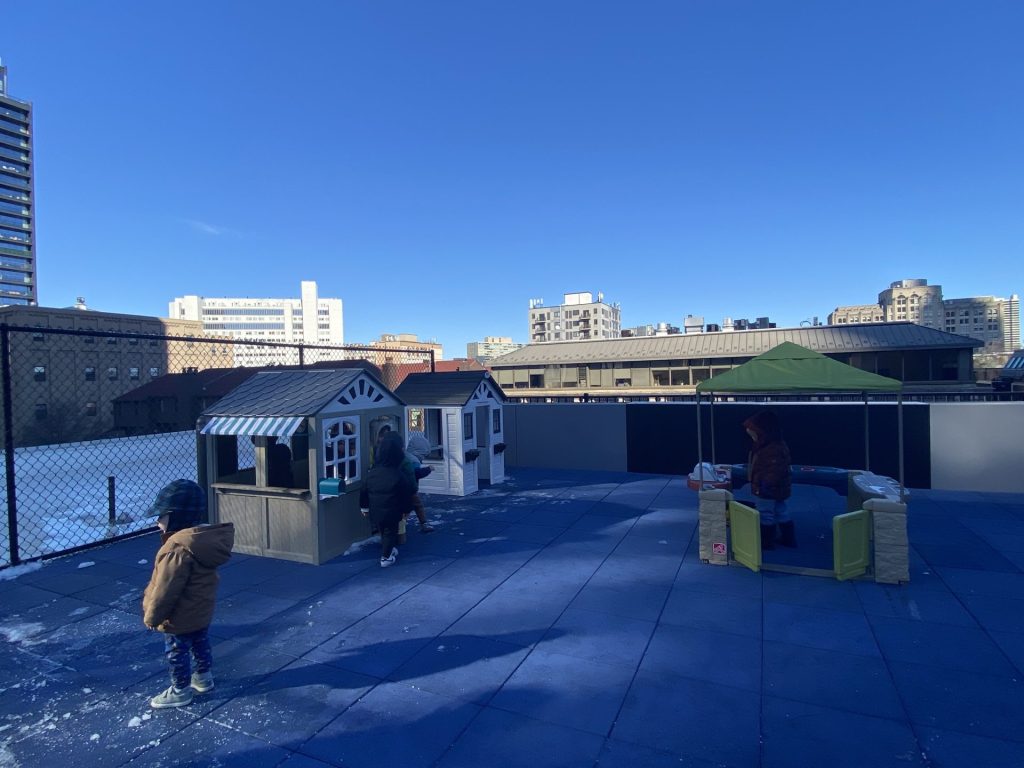


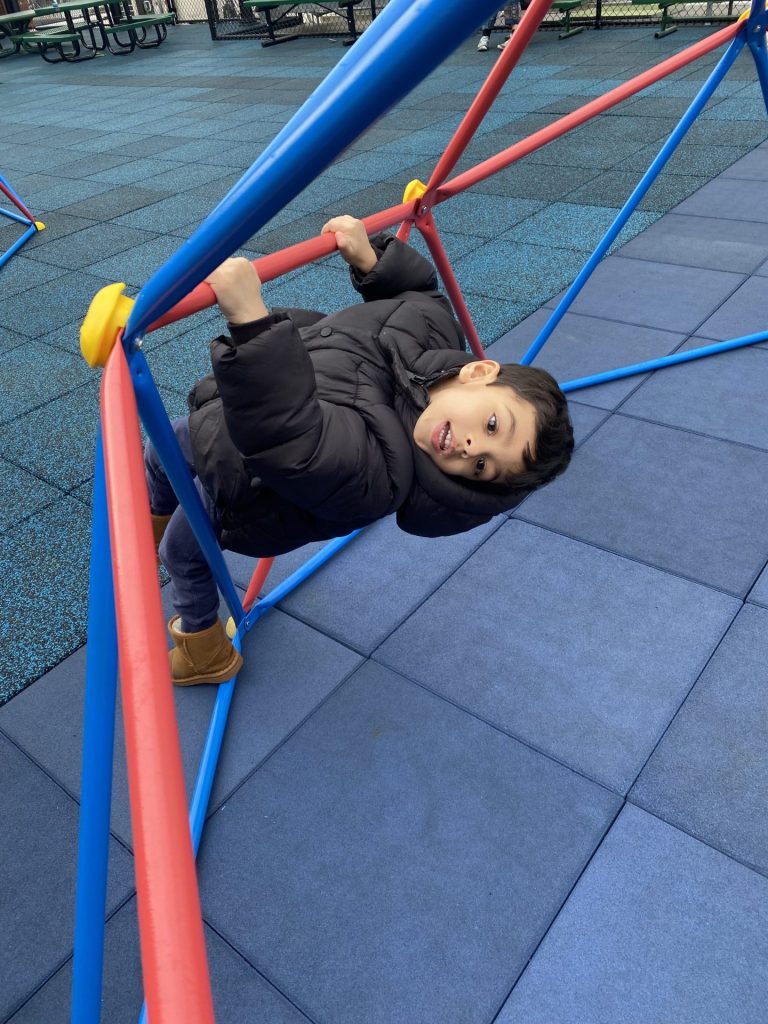


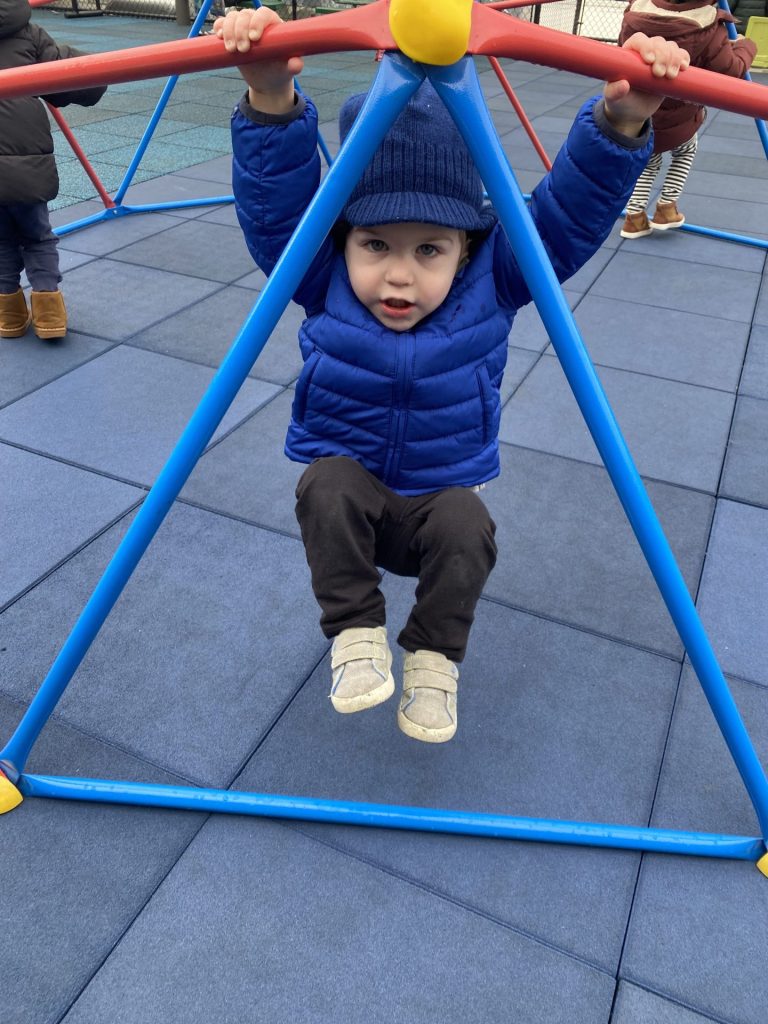
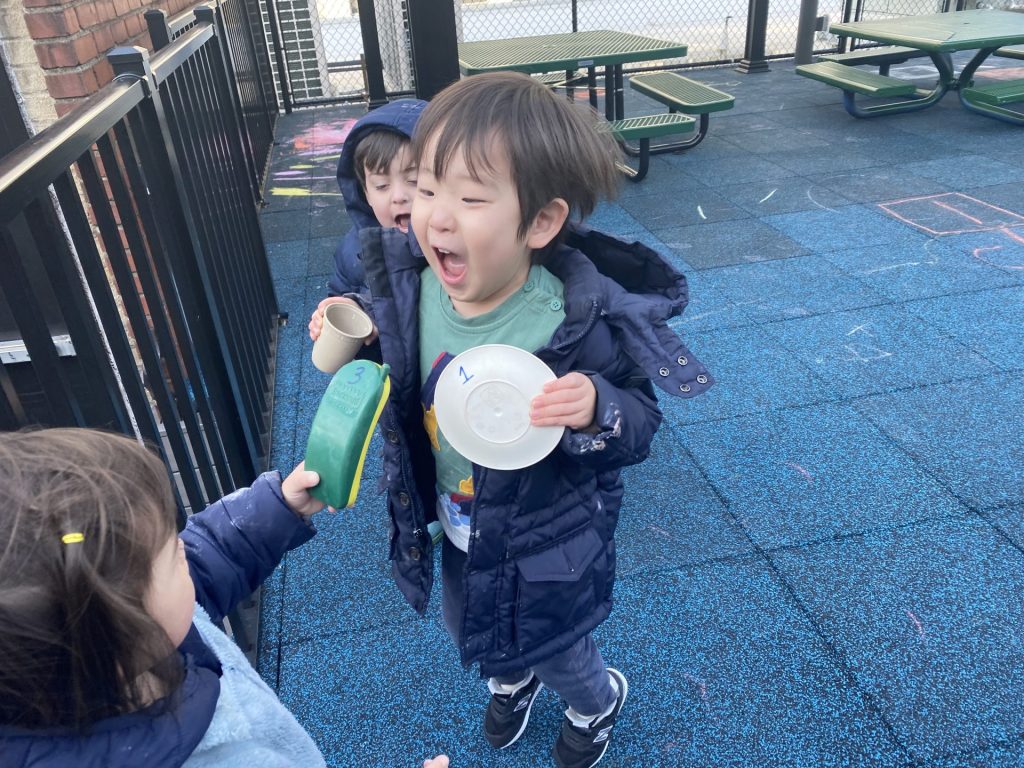
The children have been engaged with the work. They have been in such deep focus during the work cycle, I was able to move a tray from the shelf to a table without distracting the child. They continued to work and move along with the tray to the table.




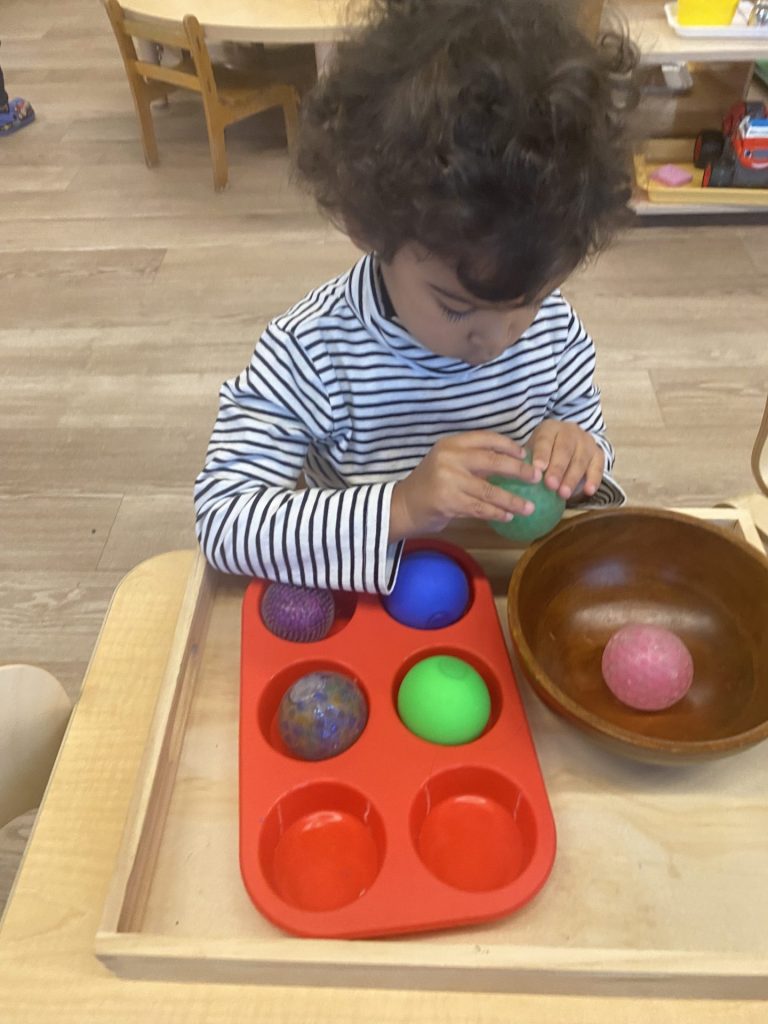
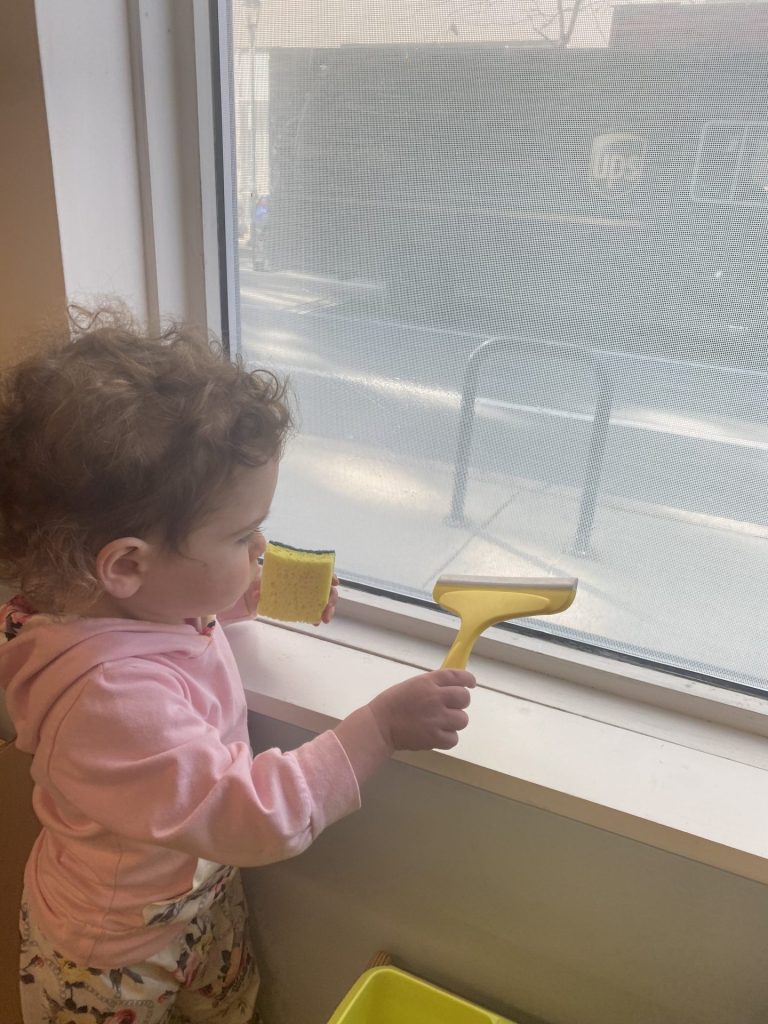


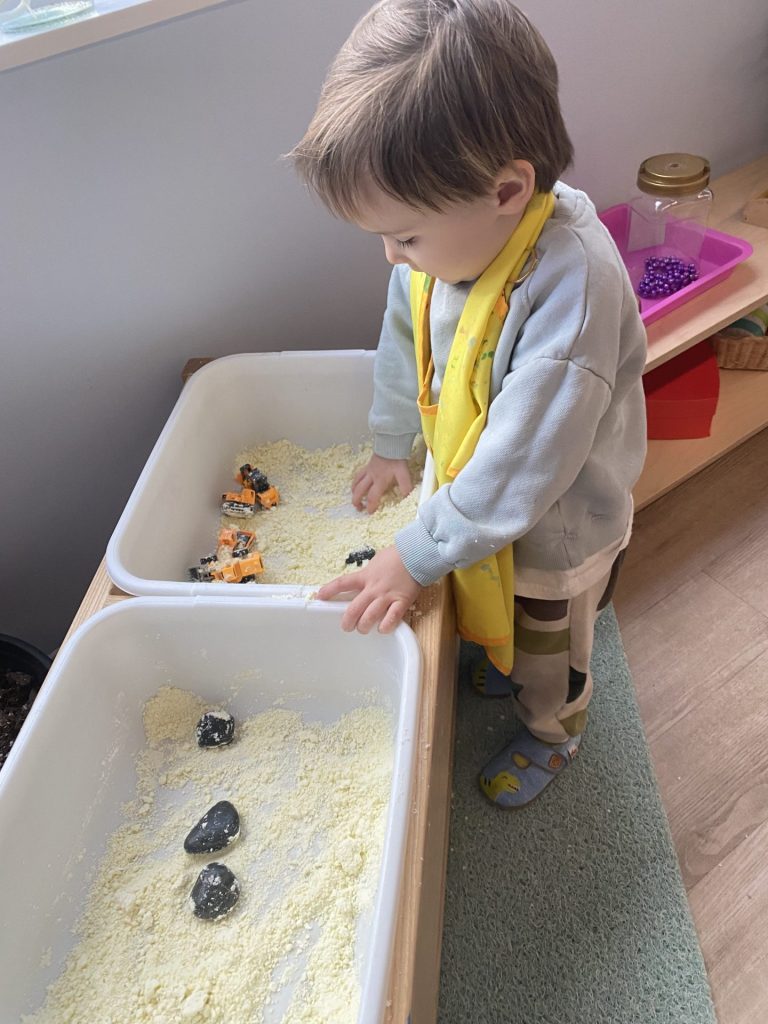
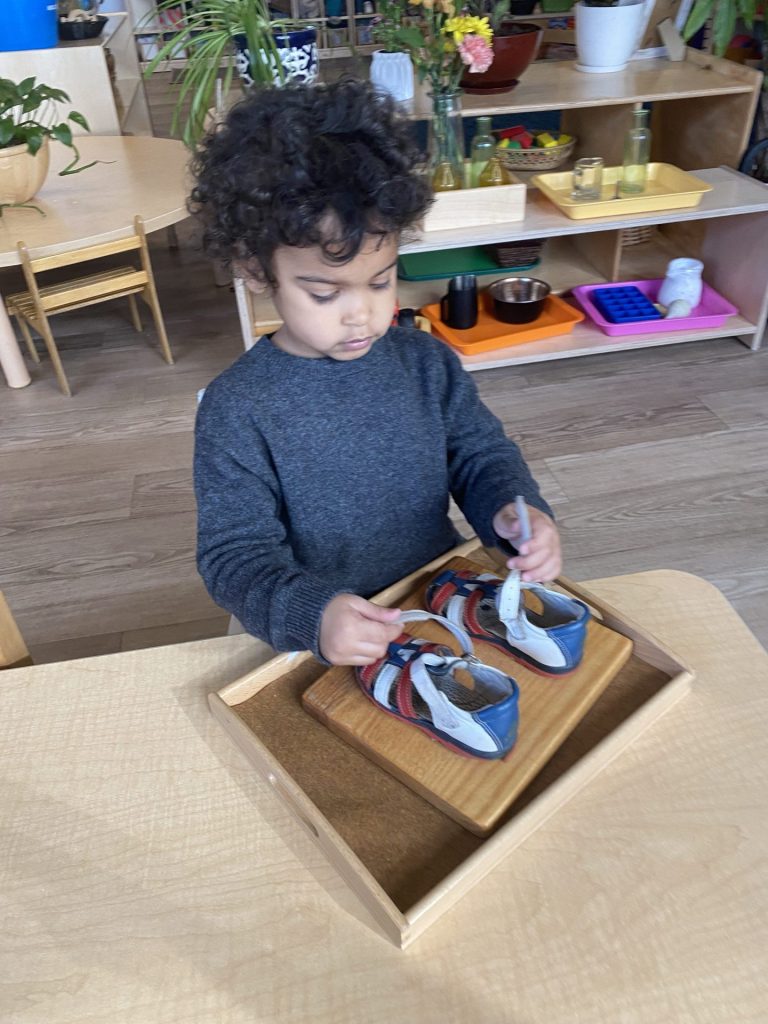
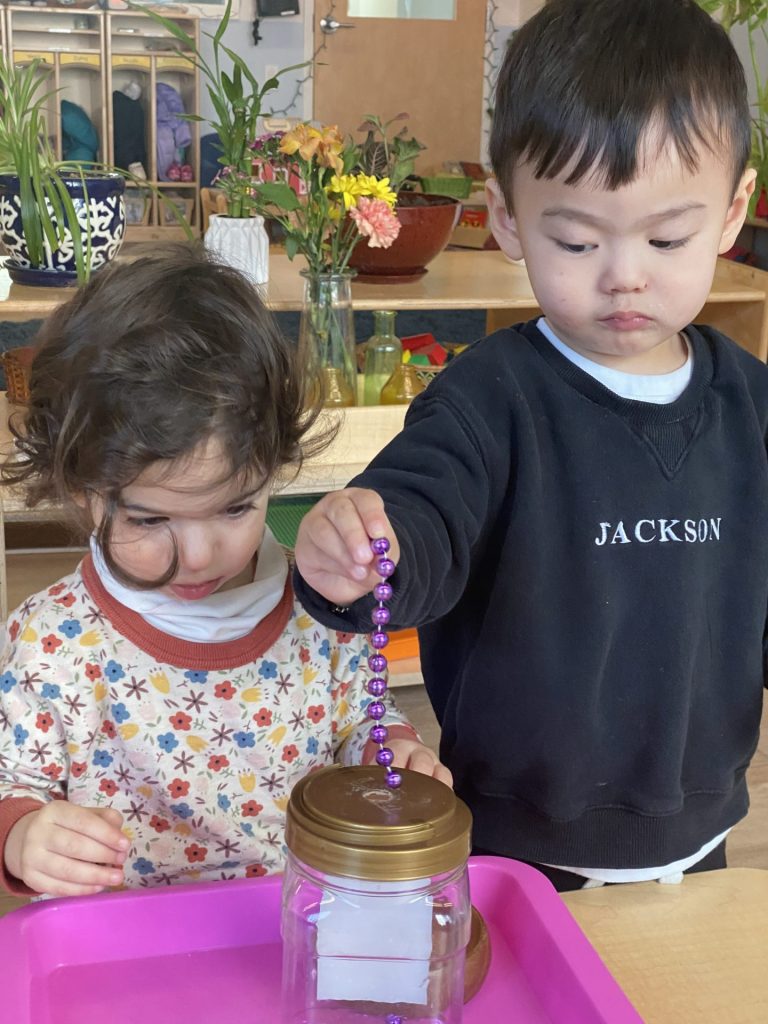
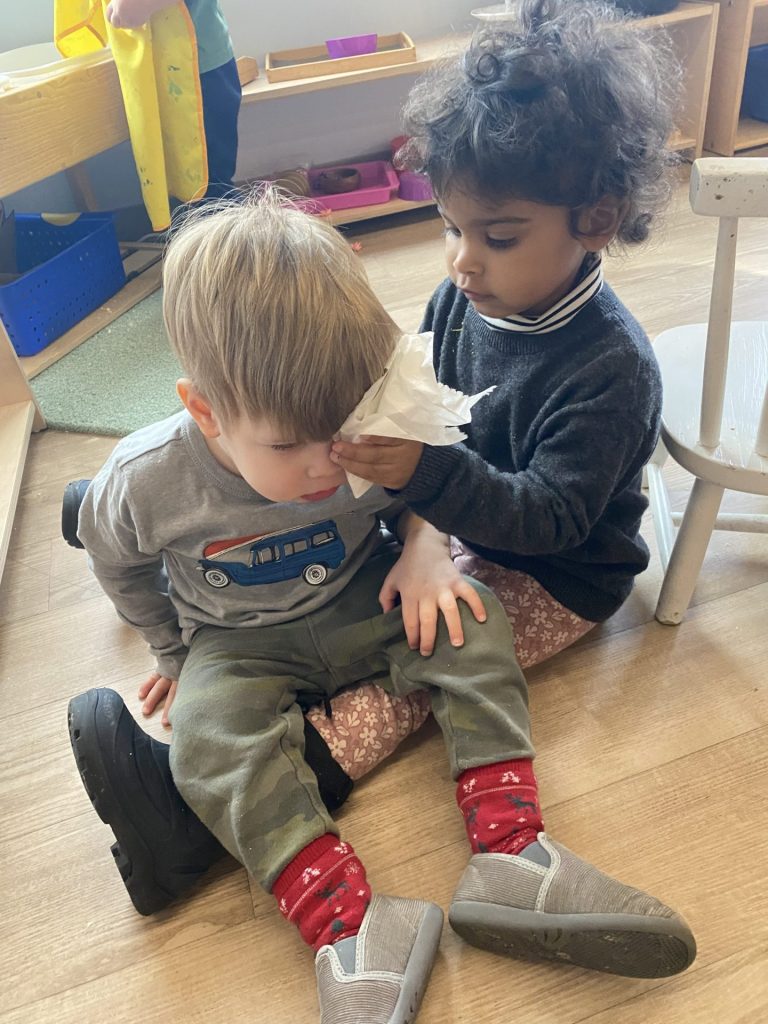
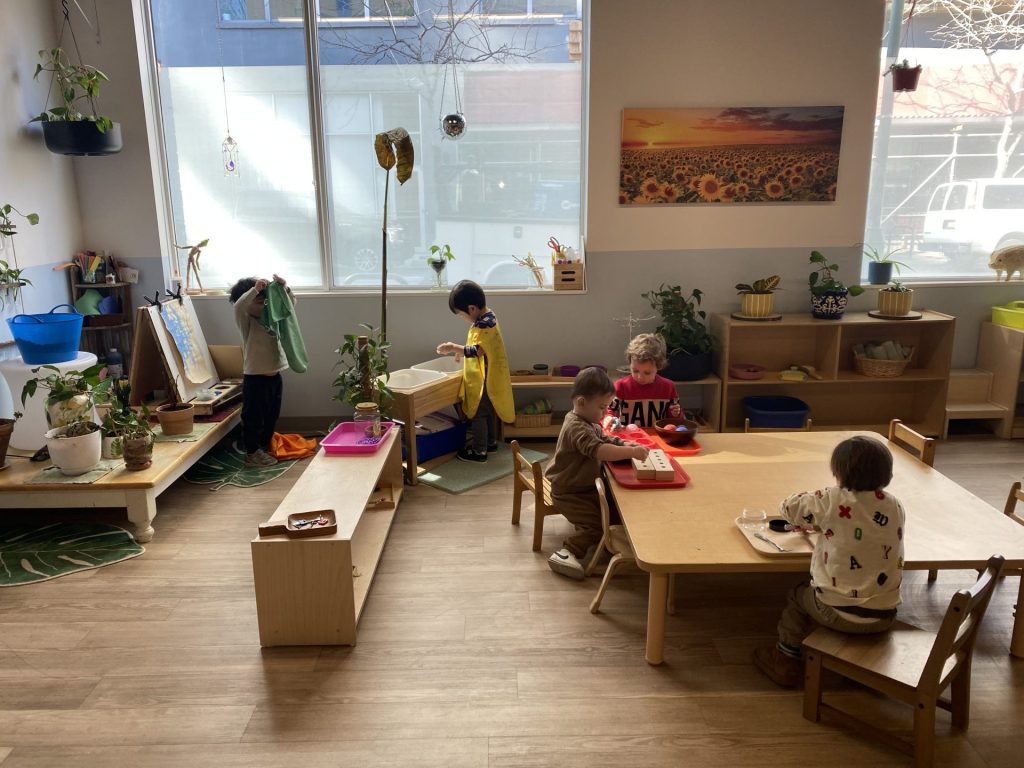

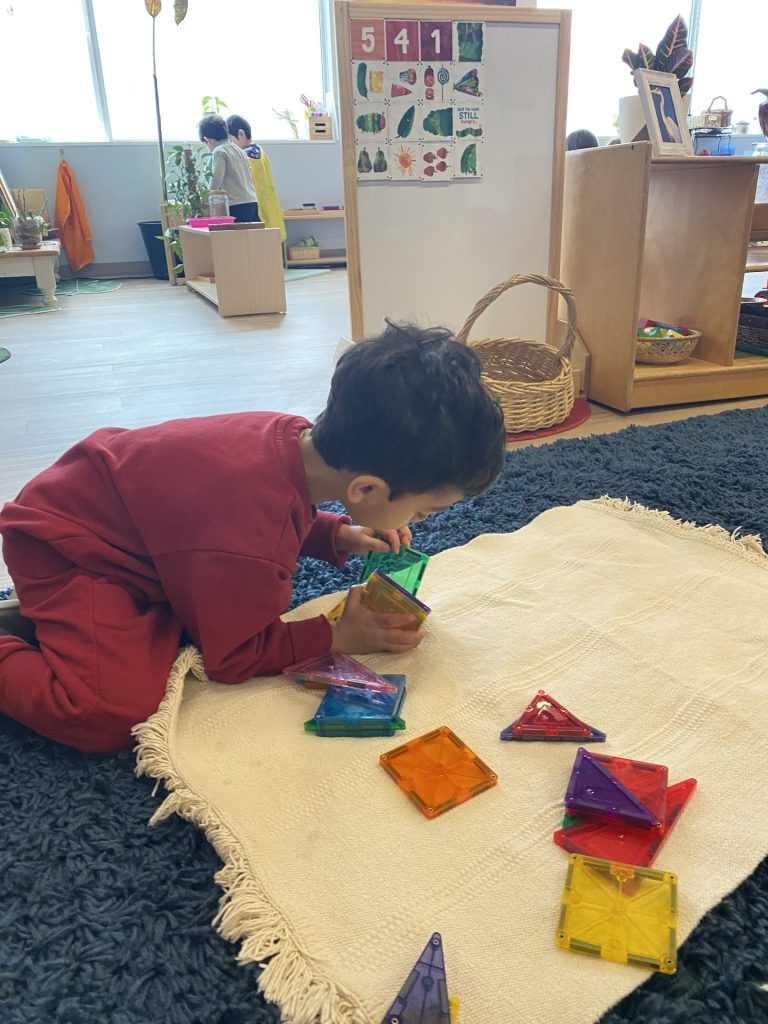


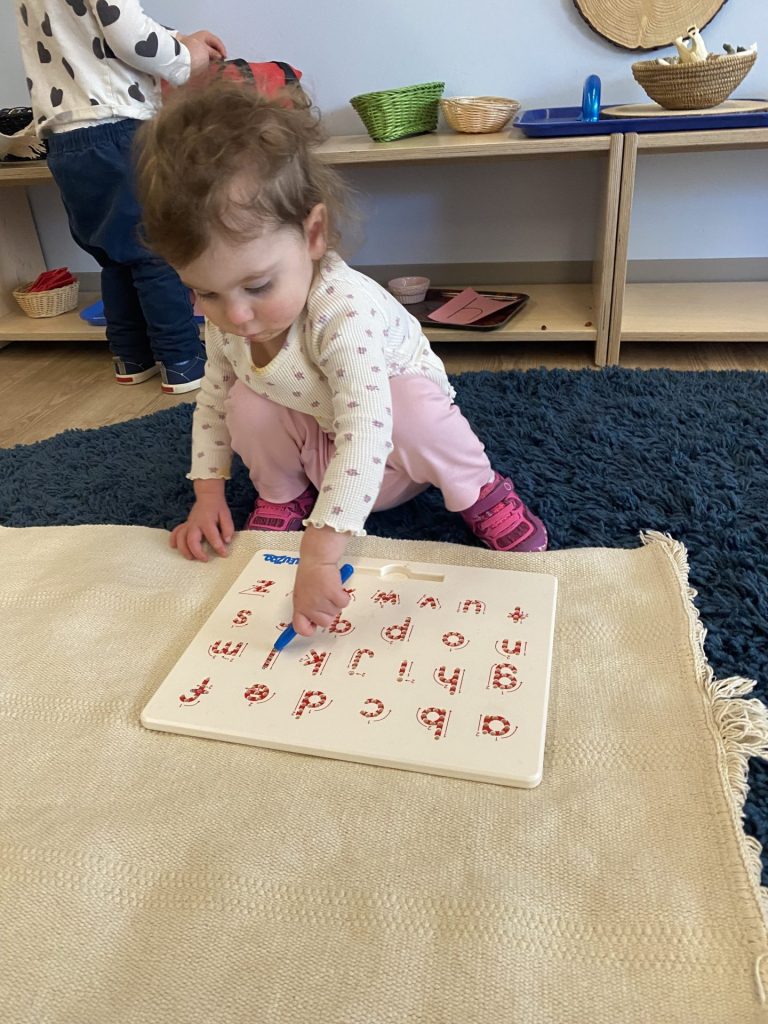
Our Very Hungry Caterpillar
The children have been busy painting for our auction project and helping glue on the dots! They (to be honest, we) have been so excited about creating our project that The Very Hungry Caterpillar has crept into our classroom in various ways.
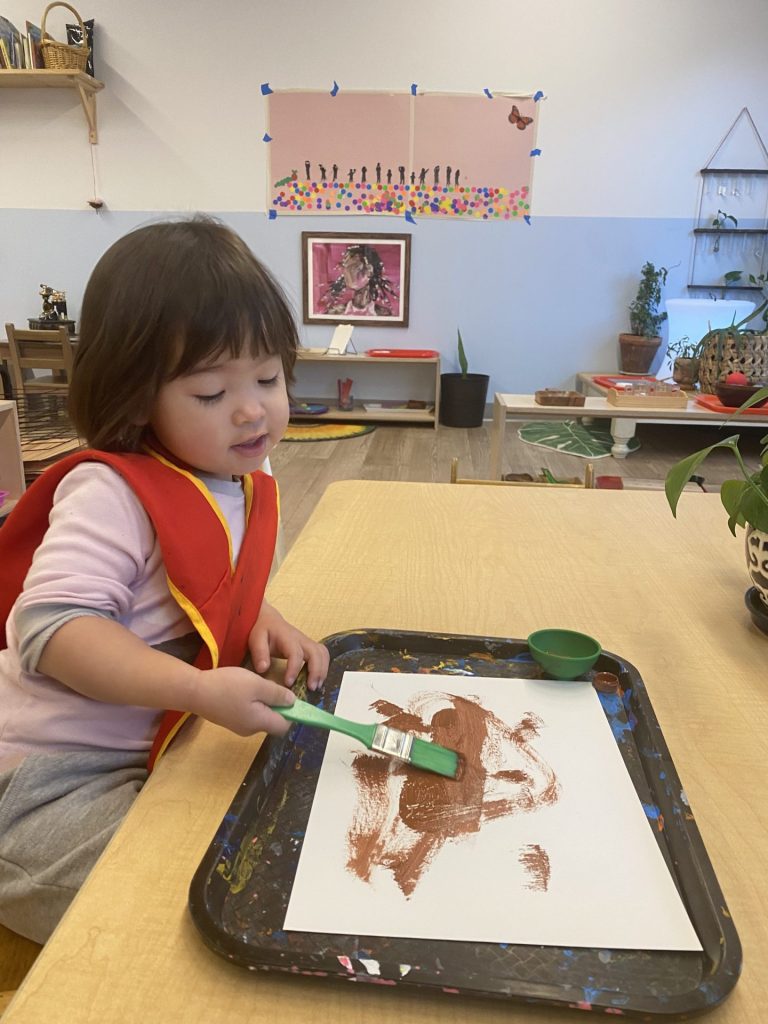
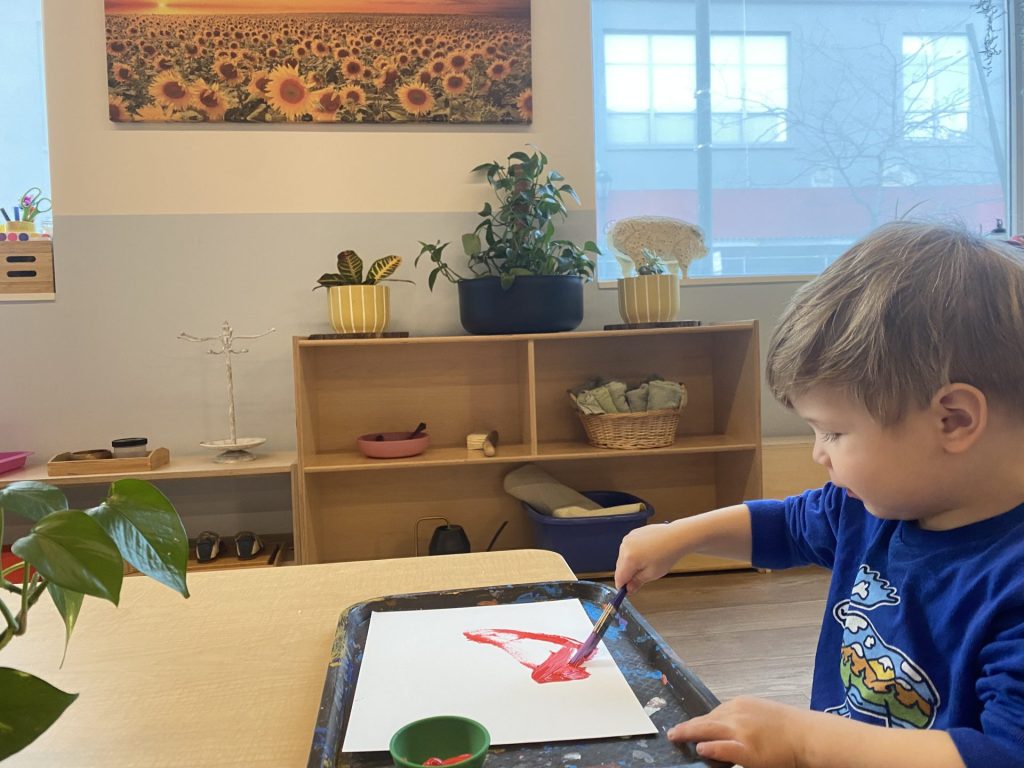


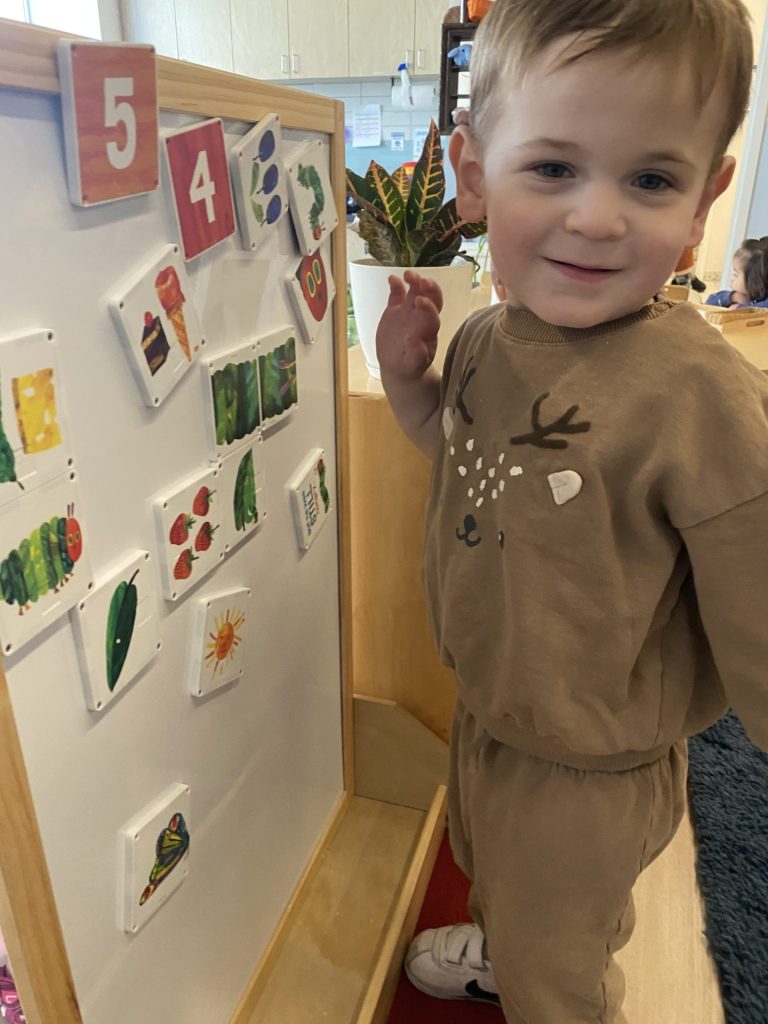
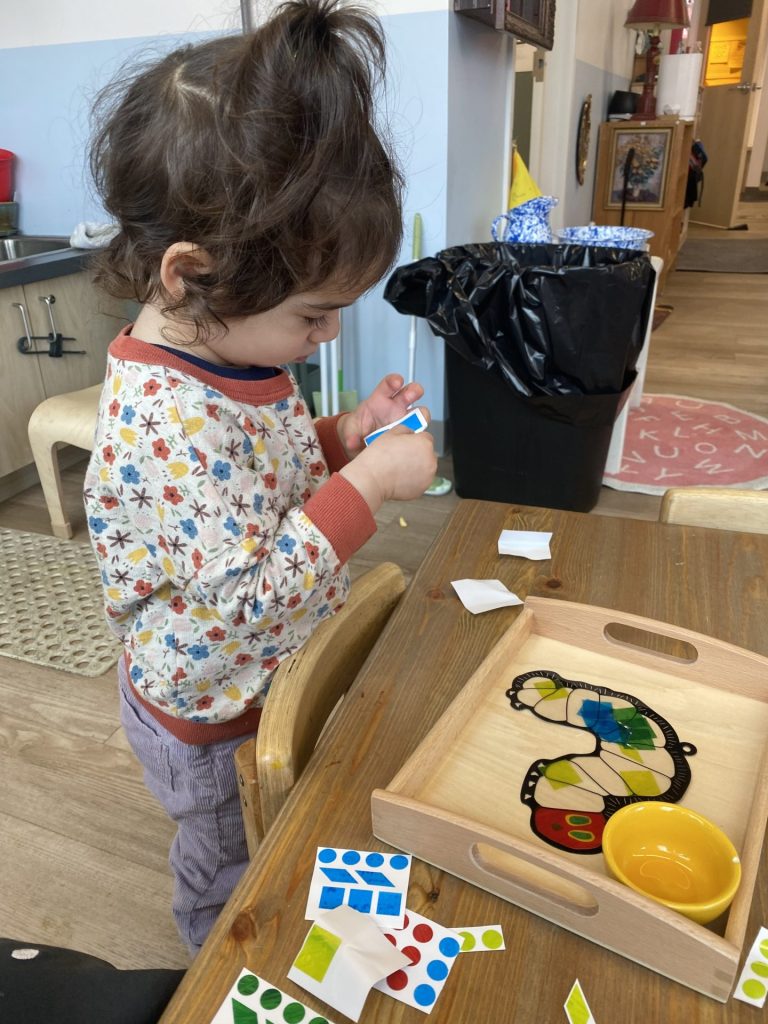


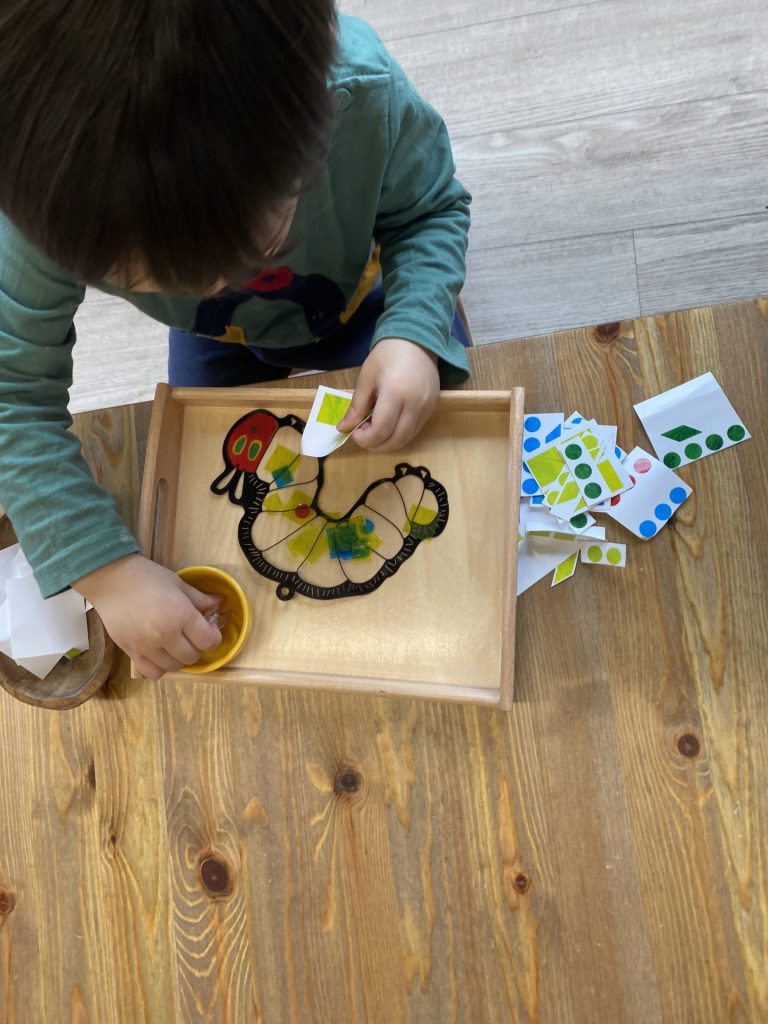

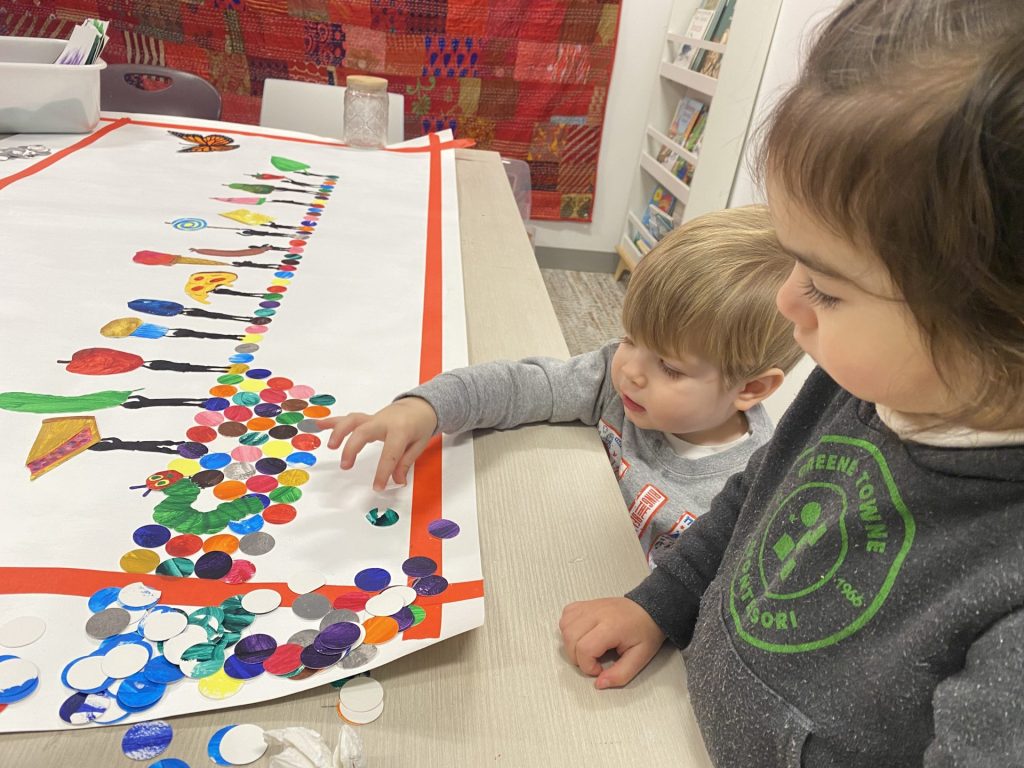
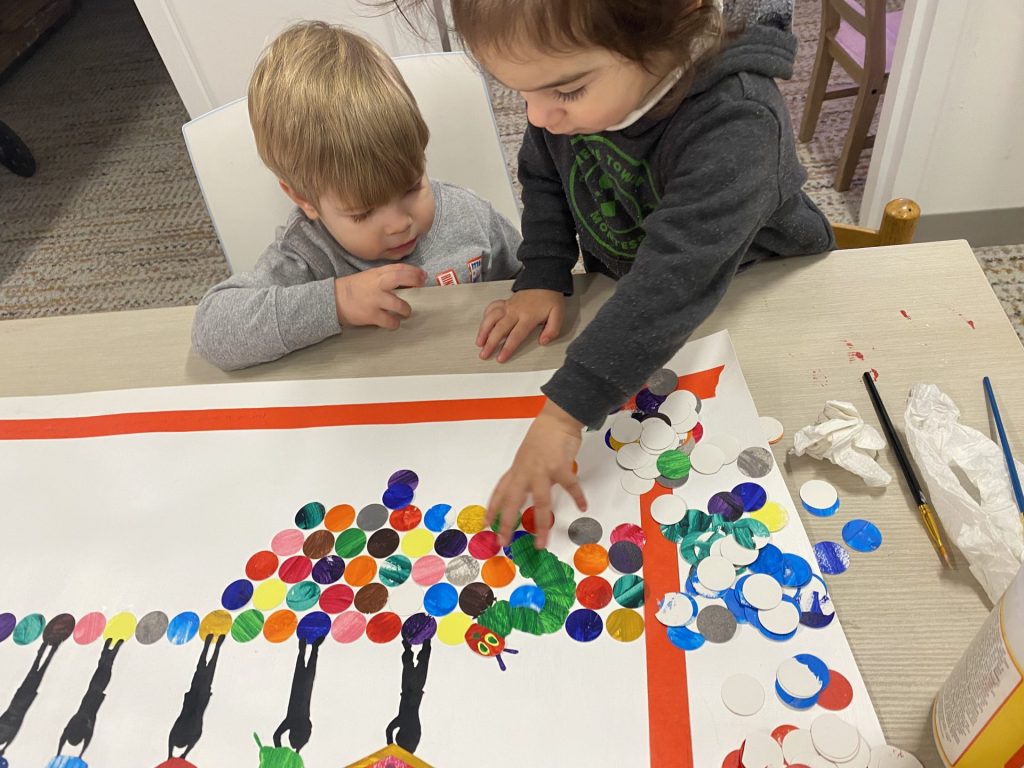


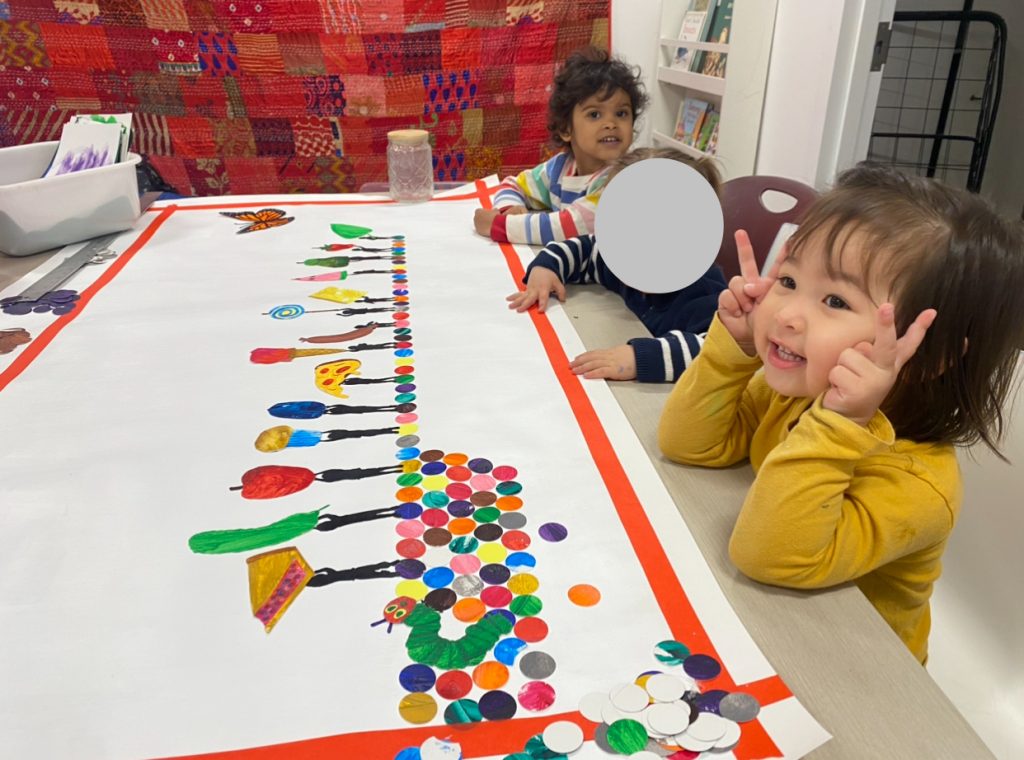


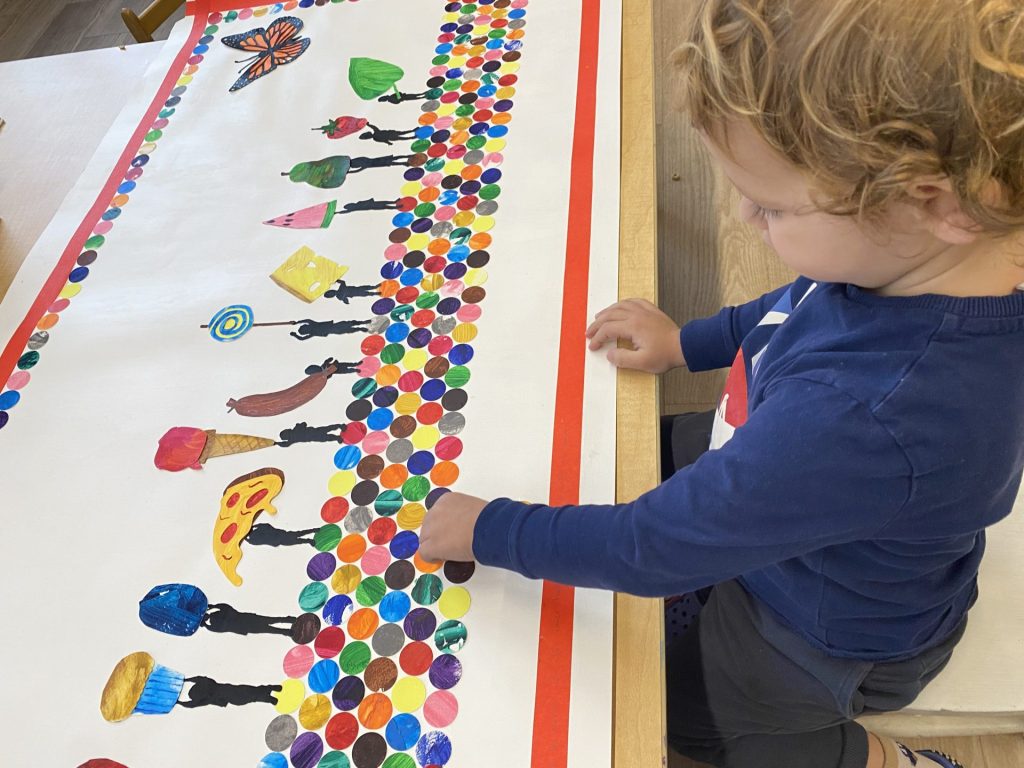
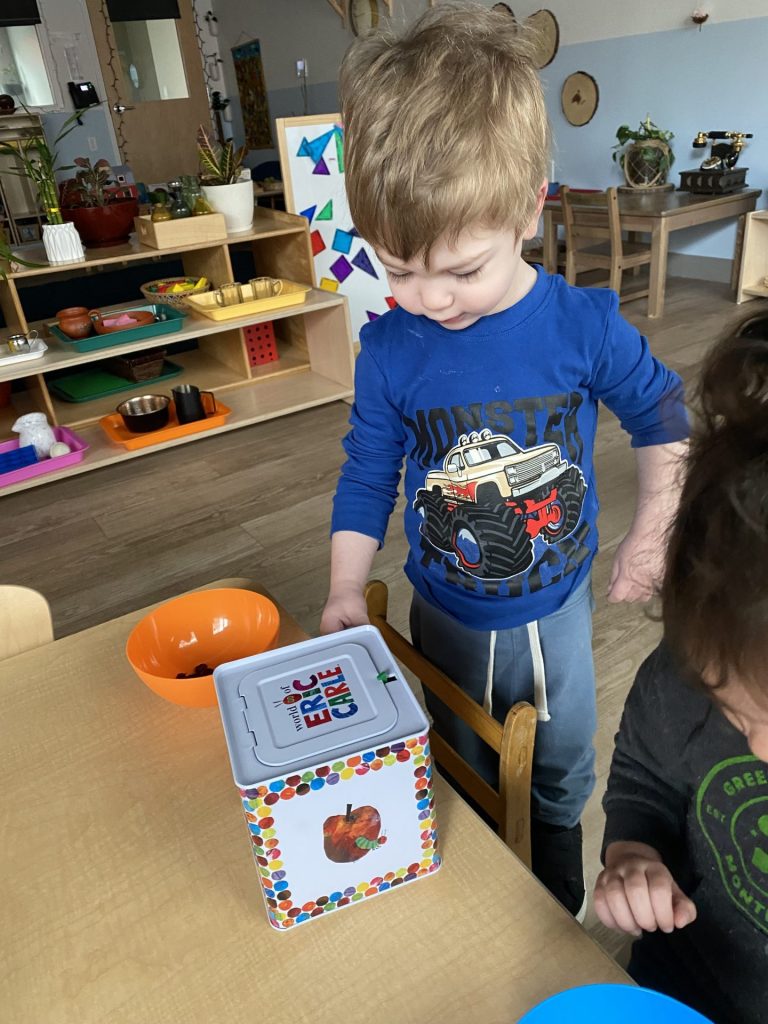


Upcoming Events
- Friday, March 15th: School Closed
- Monday-Friday, March 25th-29th: School Closed for Spring Break
- Monday, April 1st: School still closed
- Just Kidding! Classes Resume! (Happy April Fools Day)
Previous Blogs
- Monarch Community: Bibliotherapy (January 2024)
- Monarch Community: Nurturing the Child’s Spirit Through the Sense of Wonder (December 2023)
- Monarch Community: Helping vs. Hindering (November 2023)
- Monarch Community: Toddler Development & the Importance of Limits and Natural Consequences (October 2023)
- Monarch Community: Setting Your Child Up for Success through Repetition and Routine Building (September 2023)
- Monarch Community: Welcome To The Monarch Community at Greene Towne Montessori School (August 2023)

